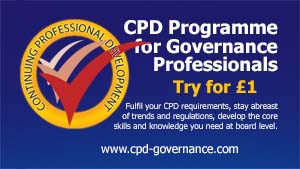The Meta Model
Developed by John Grinder and Richard Bandler
Deletions, distortions and generalisations
The Meta Model was described by Grinder and Bandler in their book The Structure of Magic* (1975) as a result of studying change processes used by therapists. It develops previous work by Chomsky, Bateson and other transformational linguists. It was the first result of their co-operation and represents the beginning of NeuroLiguistic Programming, which is an approach to modelling behaviour.
Language serves as a representational system for our experiences. Our possible experiences as humans are tremendously rich and complex. We code our experiential reality with words, thus creating our reality. But we delete, generalise and distort information so it becomes disconnected from its deeper meaning. Just as the map is not the territory it represents, so the word is not the thing named – there is a gap.
The Meta Modal is a powerful and explicit set of linguistic information gathering tools designed to reconnect a person's language to the experience represented by their language.
The Meta Model is made up of three main classes of processes each of which violates semantic well-formedness. They can lead to greater or lesser choice depending on how they are used. The Meta Model seeks to clarify – but used in reverse, the Milton Model (Ericksonian Hypnosis), adopts unspecific language.
Deletions: the missing parts of the model
Information is deleted in six main ways:
Unspecified nouns: any noun that has as many meanings as there are people using that noun. ASK: what, specifically?
Unspecified verbs: verbs that delete the specifics of the process. ASK: how, specifically?
Nominalisations: verbs made into nouns, thus deleting the process or action. Very often creating a sense of 'stuckness'. ASK: who, how, what is ....ing? Turn the nominalisation back into a verb.
Lack of referential index: the pronoun is not specified, thus deleting who or what it refers to. ASK: who, specifically?
Simple deletions: information is simply missed out. ASK: about whom, about what?
Comparative deletions: the standard of comparison is deleted. ASK: compared to what?
Generalisations
Information is generalised in three main ways:
Unversal quantifiers: generalisations that preclude any exceptions. ASK: do you really mean all, every of never? Surely there might be some exceptions!
Modal operator of necessity: words that require particular action, e.g. should, shouldn't, must must not, have to . . ASK: what would happen if you did/didn't?
Modal operator of possibility: words that imply no choice, e.g. can't, haven't, won't. ASK: what would happen if you did/didn't? What is stopping you from . . ?
Distortion
Information is distorted in five main ways:
Complex equivalance: where two experiences are interpreted as synonymous; x means y. ASK: how does doing X mean that Y?
Lost performative: value judgements, rules and opinion in which the source of the assertion is missing. ASK: how do you know that . . ?
Mind reading: assuming that you know another person's internal state. ASK: how do you know that . . ?
Cause and effect: belief or implication that one person's action can cause another's emotional reaction. ASK: how does his/her doing X cause you to Y?
Presuppositions: basic assumptions that must be true for a model to make sense. ASK: how would X lead to Y?
Applications of the Meta Model
The Meta Model was originally developed in a therapy context and is now a powerful tool in organisational as well as individual change. Meta Model questions can be used to challenge another person's (or your own language or internal dialogue) as reflected in their language. The fourteen processes might sound complicated – just learn to listen for gaps in information and then ask about them



